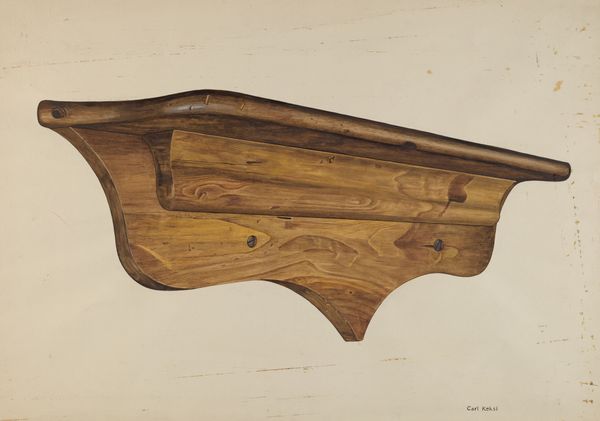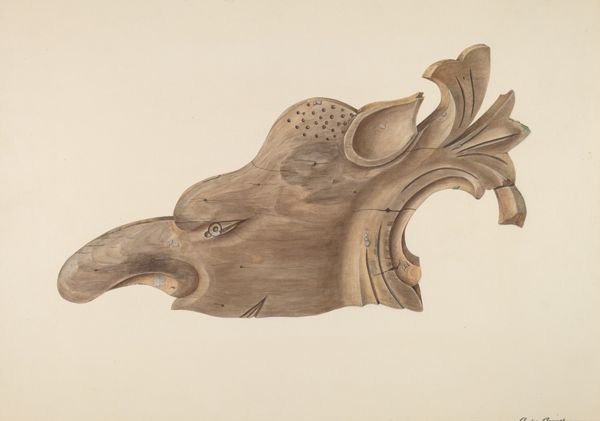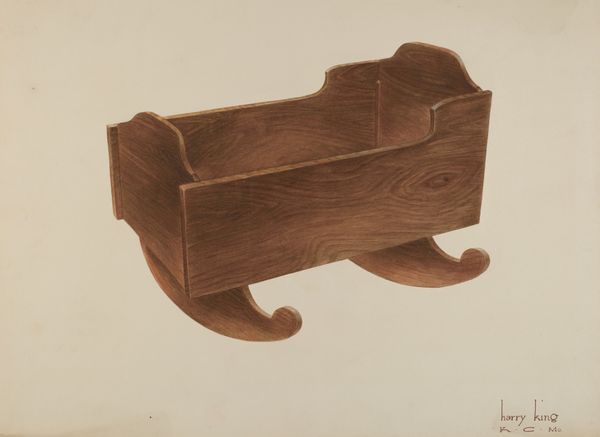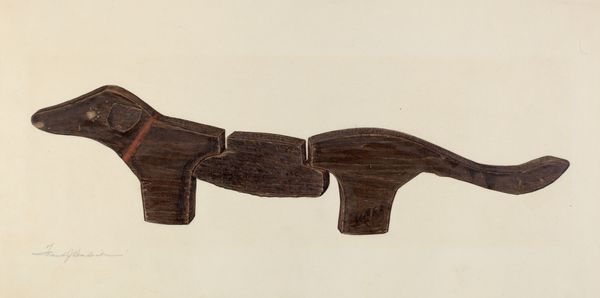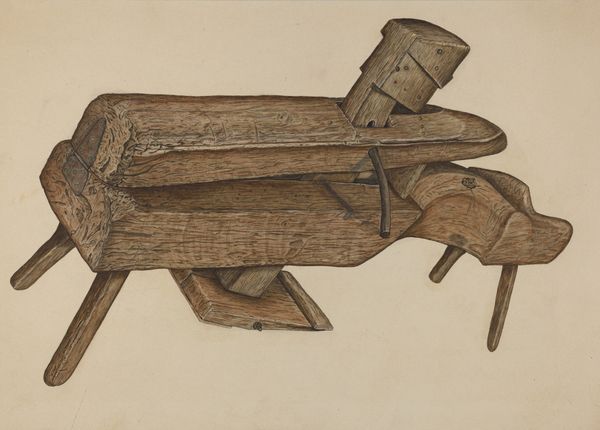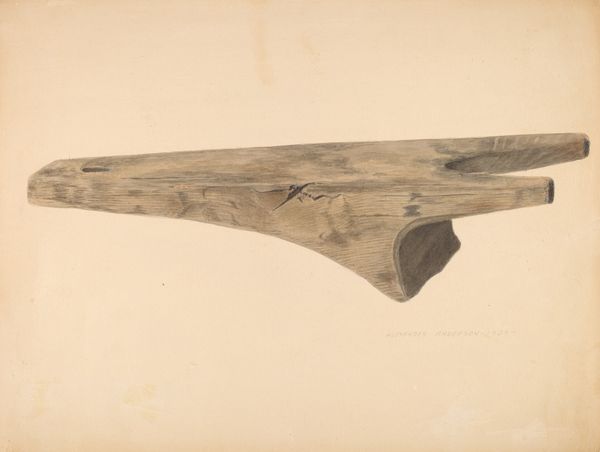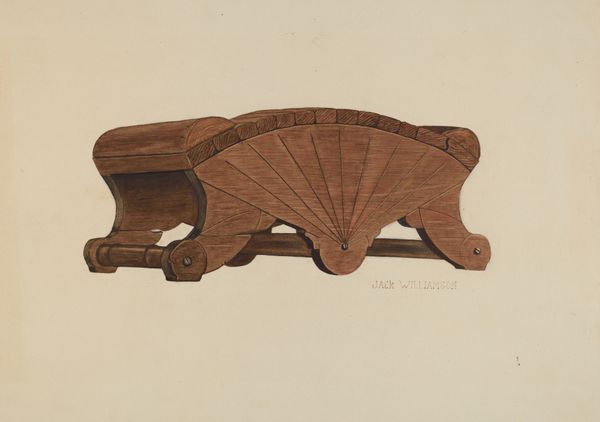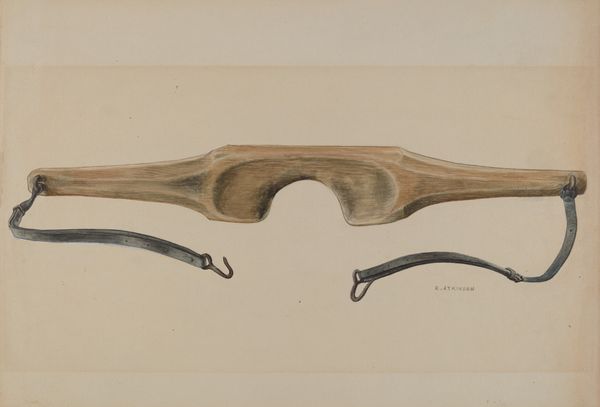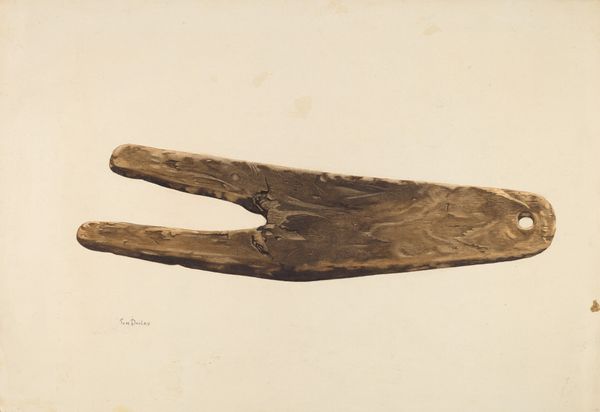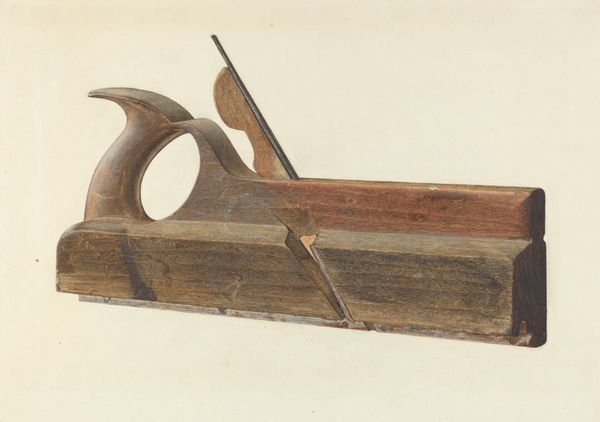
drawing, pencil, wood
#
drawing
#
charcoal drawing
#
pencil
#
wood
#
realism
Dimensions: overall: 24.4 x 35.3 cm (9 5/8 x 13 7/8 in.)
Copyright: National Gallery of Art: CC0 1.0
Curator: Welcome! Today, we’re examining Herman O. Stroh’s “Marking Gauge for Barrels,” a drawing from 1939 rendered with pencil, charcoal and wood. Editor: My first impression is of muted precision. The subdued palette gives a warmth to what would otherwise be a cold, mechanical object. I’m immediately drawn to the contrast of the wood grain against the smooth background. Curator: Absolutely, and that stark realism echoes a wider socio-economic environment. This drawing presents craftsmanship during a period of industrial transformation—the slow disappearance of hand tools amidst factory-made perfection. Consider its setting: this piece emerges from the late Depression era. Editor: From a formal point of view, the repetition of curved forms is striking, and yet everything is so deliberate. There's the gentle arc of the gauge itself playing against the tighter curves carved out beneath it. It suggests an elegance hidden within its utilitarian purpose. Curator: It reminds us of the beauty in functional design and the vital, and perhaps undervalued, contribution of craftsmen like the barrel maker in their local economies. Before mass production, such skilled trades were at the heart of communities. Editor: The lighting too helps bring this out. Look at the gradations on the wood, carefully rendering shadow and surface texture—how Stroh coaxed such depth and form from such humble materials. It's a meditation on form and surface. Curator: You're right. The drawing, I feel, is less about celebrating this tool and more about documenting its fading role. It's quietly asserting the cultural significance of manual trades as machinery encroaches upon traditional ways. It prompts reflection on the impact of industrial progress and the shifting landscapes of labor. Editor: I see it more as the celebration of simple geometries, shapes born from necessity yet rendered with devotion and care. It's almost as if Stroh elevated it into a silent symbol—a quiet homage. Curator: In its focus on detail and purpose, it serves as an interesting snapshot into our cultural past, a past that revered function and enduring artisanship. Editor: It is an elegant piece, that leaves me contemplating the aesthetic beauty found in functional objects.
Comments
No comments
Be the first to comment and join the conversation on the ultimate creative platform.
